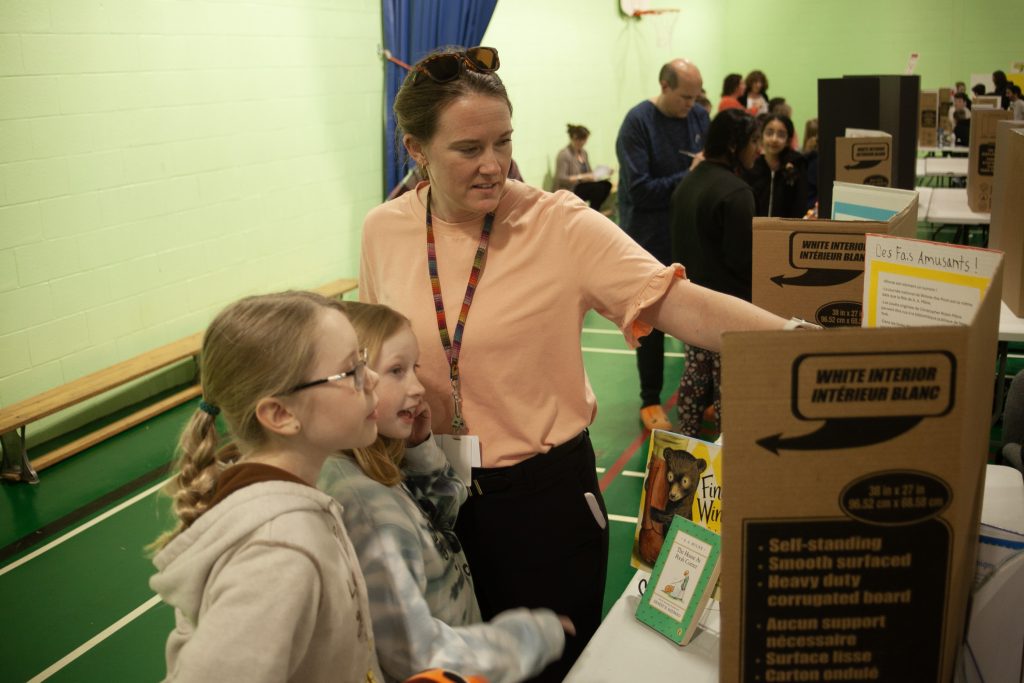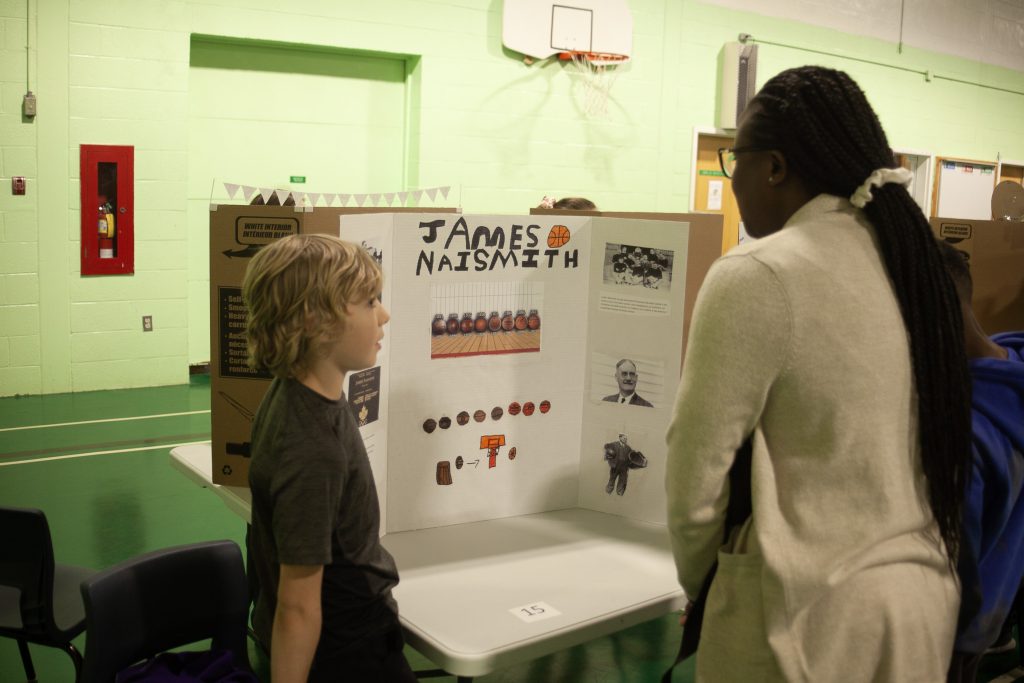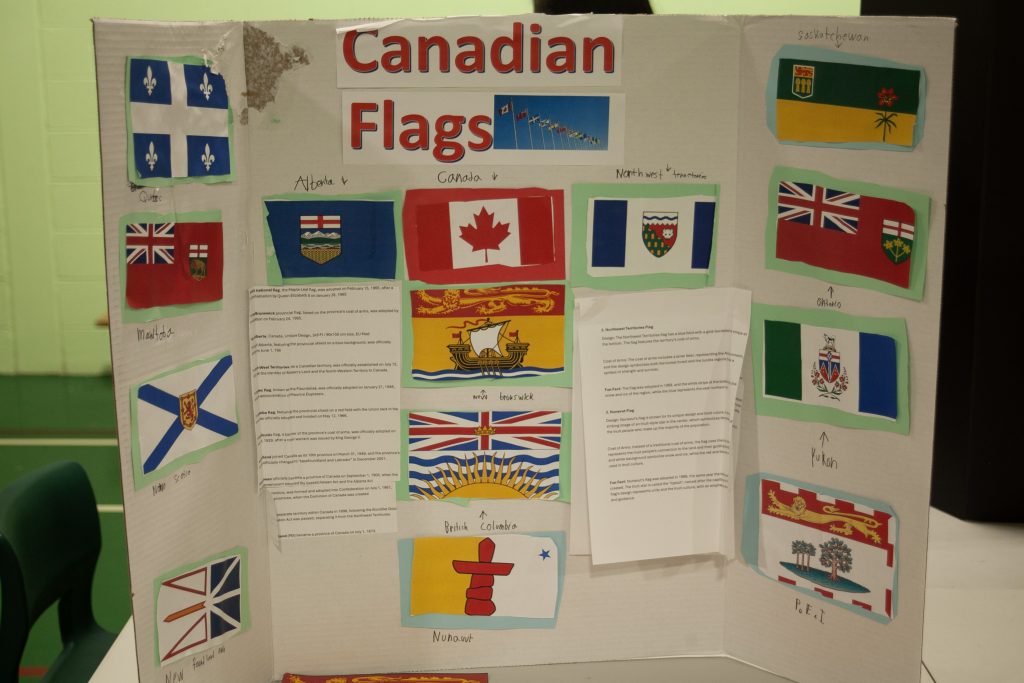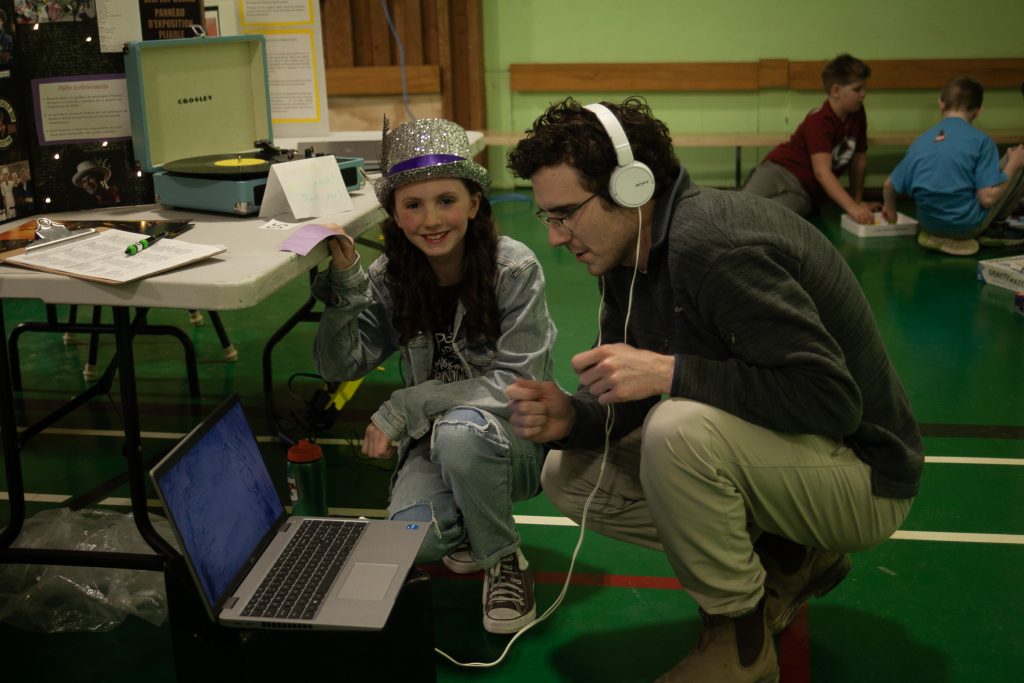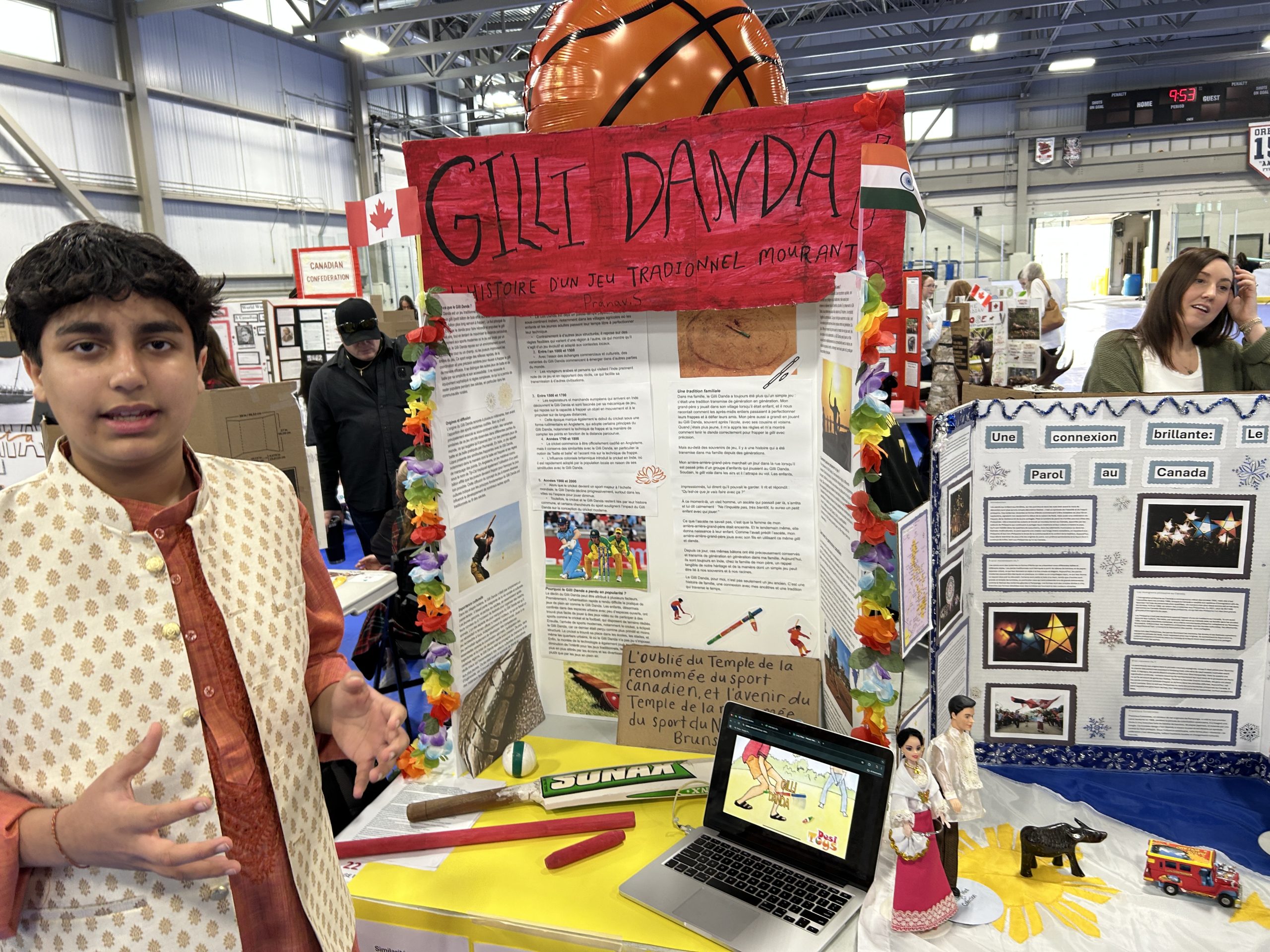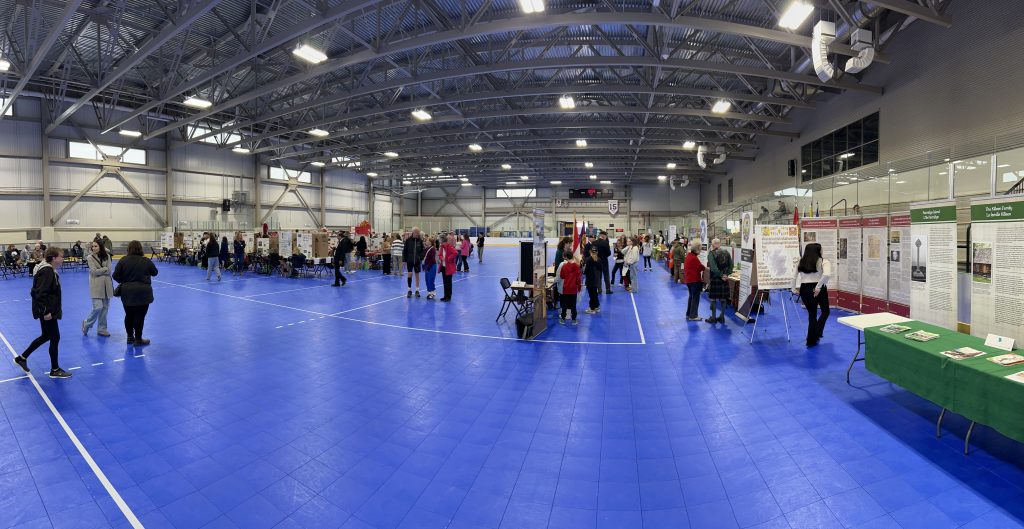
At a time in history when misinformation and disinformation quickly spread with the ease of an app tap, our Anglophone School District West students proved that verified sources and accurate information are the bedrocks of a healthy democracy.
On Wednesday, May 7, 102 district students displayed both their research rigor and cultural curiosity at the 2025 Regional Heritage Fair held at Fredericton’s Grant Harvey Centre. New Brunswick’s Heritage Fair Program is part of a nationwide effort to stoke awareness and increase interest in Canadian history, according to the province’s Archaeology and Heritage Branch.
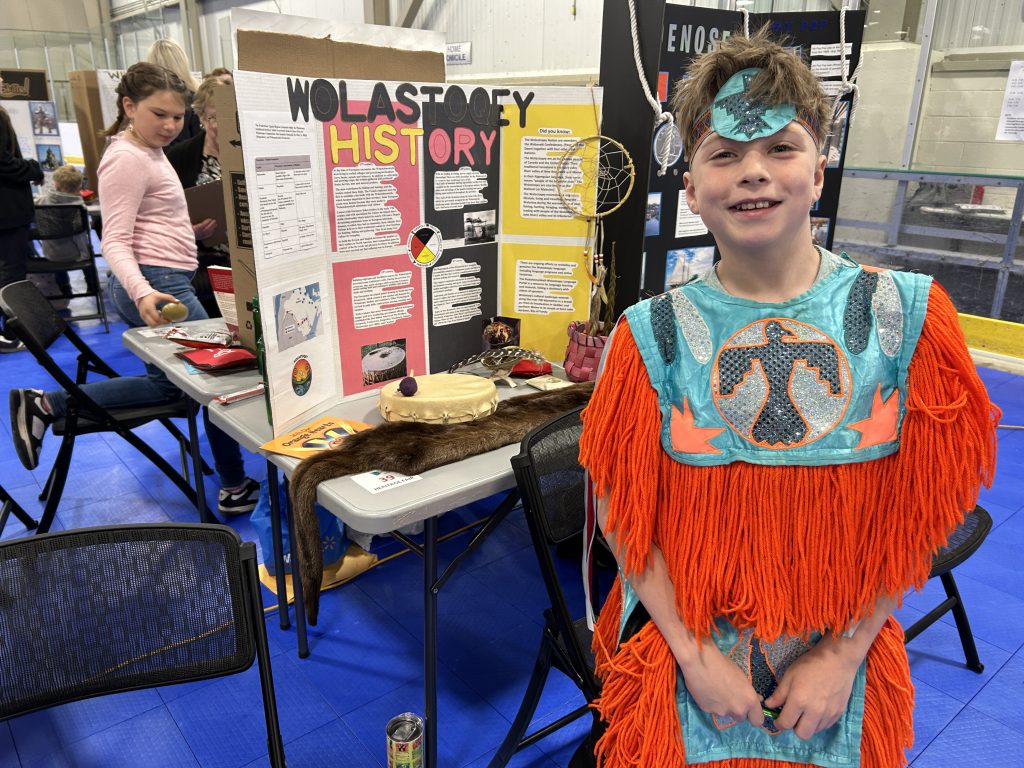
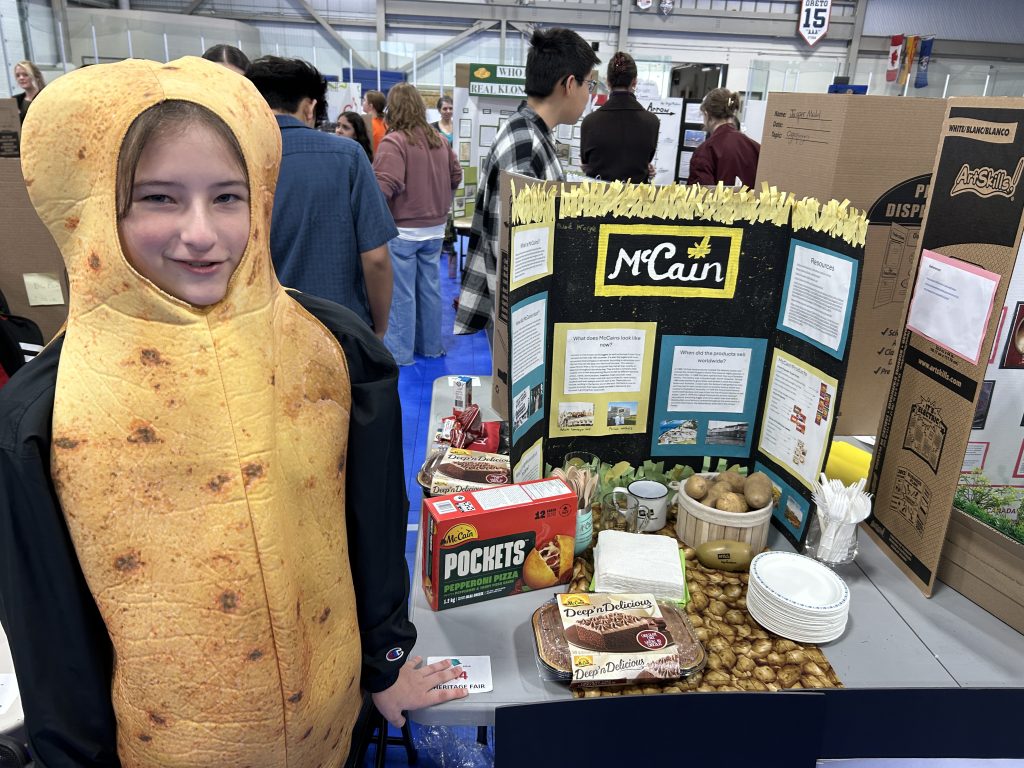
“I chose McCain because there’s a lot of potato farmers where I live, in Grand Falls, and it provides a place for local potato farmers to sell their products… my parents used to work at McCain.”
Grade 8 John Caldwell School student Khloe Laforge
The students—winners of heritage fairs in their individual schools—researched and prepared projects with local, regional, and national themes. Some of the projects were quite personal, with information coming from historical government records preserved by families.
A fascinating story backed by fact
For Keswick Ridge School Grade 7 student Dakota Bilow, family provided his subject of interest.
Bilow’s research subject was his own great-great-grandfather, Carl Leo May, a First World War veteran. Bilow’s project displayed copies of May’s Certificate of Medical Examination, Attestation of Enlistment in the Canadian Over-Seas Expeditionary Force, and a war-era photograph.
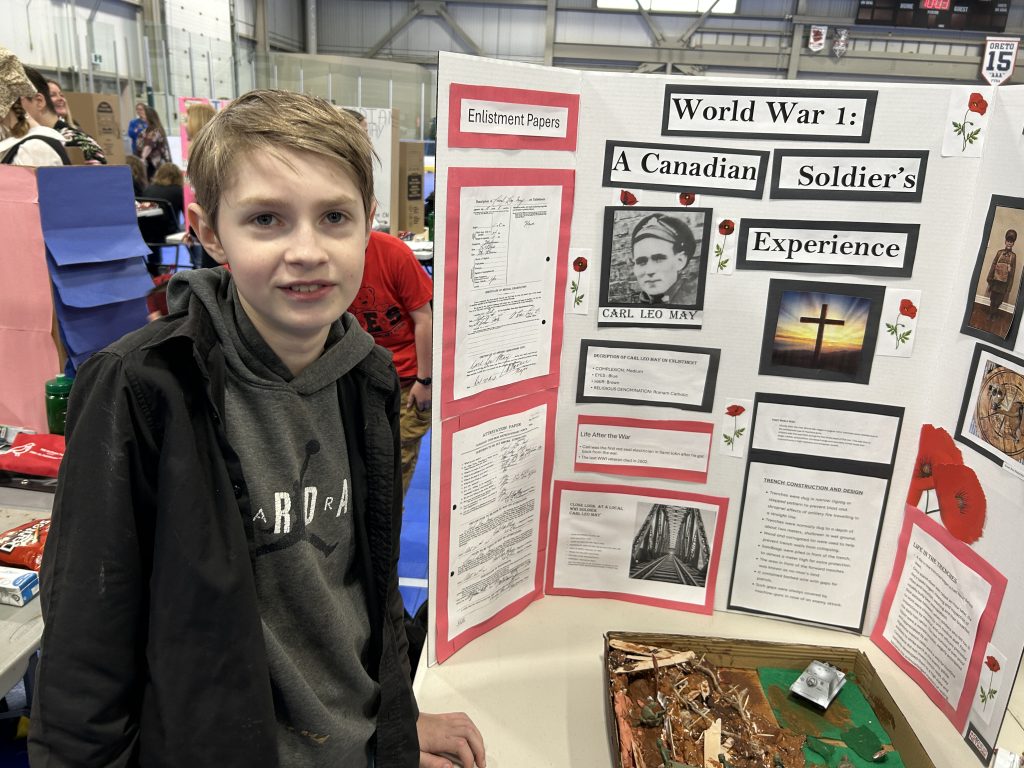
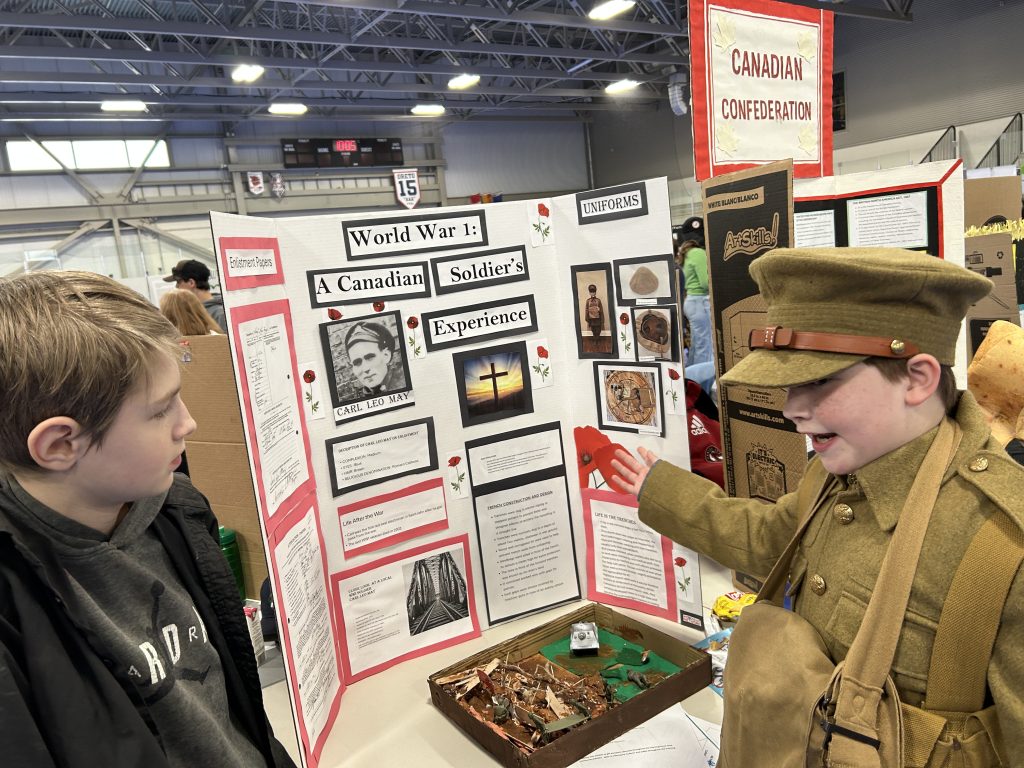
And with proof of his great-great-grandfather’s service verified thanks to official records preserved by his family, Bilow added some lore: “Fun fact, he actually lied about his age [in 1914]. He said he was 18 but he was actually 16.”
Bilow’s schoolmate and project partner, Grade 4 student Grayden Keddy— resplendent in full First World War Canadian Army kit—contributed his vast knowledge of Canadian military history to the project.
Keddy and Bilow used the CBC’s website for much of the historical information on their project. But when they weren’t using family records or the CBC, they used other sources with a critical eye.
And the winners are…
- WEC: Julianna Walton, Townsview School. Project: Le Droit des Femmes
- FEC: Joanna Dinan, FHS. Project: Récits de guerre: l’histoire de Ingegorg Alblas et Zdzisalaw Zelazney
- OEC: Danielle Lockert, Nashwaaksis Middle School. Project: History of the Canadian Flag
Well done Julianna, Joanna, and Danielle!
Our winners move onto the Provincial Heritage Fair at Government House in Fredericton on Saturday, June 7.
Regarding the use of social media in their research, Keddy said his teacher told them “some sources might not be correct, and you should check different sources to make sure they’re right. If you look into it a bit more, you’ll soon find the right one.”
Keddy has a passion for information on the era around both world wars, said his father, Michael.
“It started when he was young with the Titanic, and it went from there to World War One and World War Two. His stepdad, Brad, was in the military, and I think once Brad entered the family, he had a really big, impression on Grayden.”
Bridging cultures
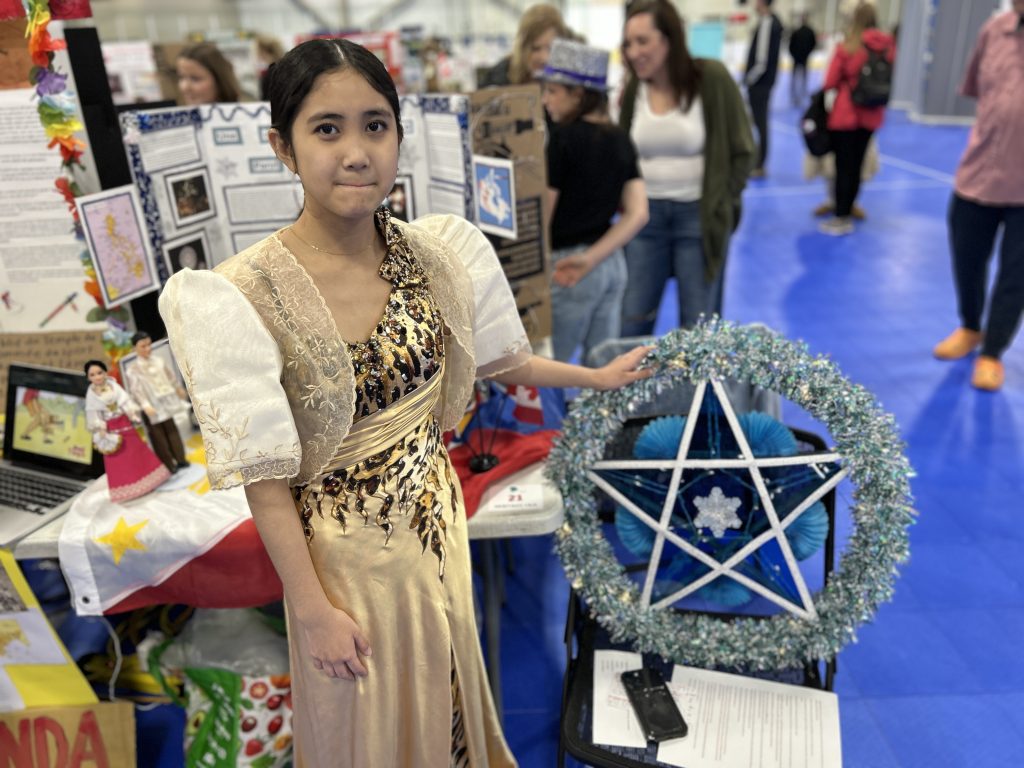
The parol—a five-pointed, star-shaped lantern important in Filipino culture—was the subject of Elyssa Laxamana’s Heritage Fair entry.
Laxamana, a Grade 9 Fredericton High School (FHS) student, chose the parol because it helps members of the Filipino diaspora feel at home no matter where they are in the world.
“It’s a symbol of [Filipino] presence and a way for them to really connect with their roots,” she said. “It not only helps Filipino immigrants to feel at home, but also second-generation immigrants like me, to really feel connected with my culture. Being both Canadian and Filipino always felt difficult for me because I don’t even speak Tagalog. But that’s why I always try to immerse myself in the culture, to learn about stuff like this.”
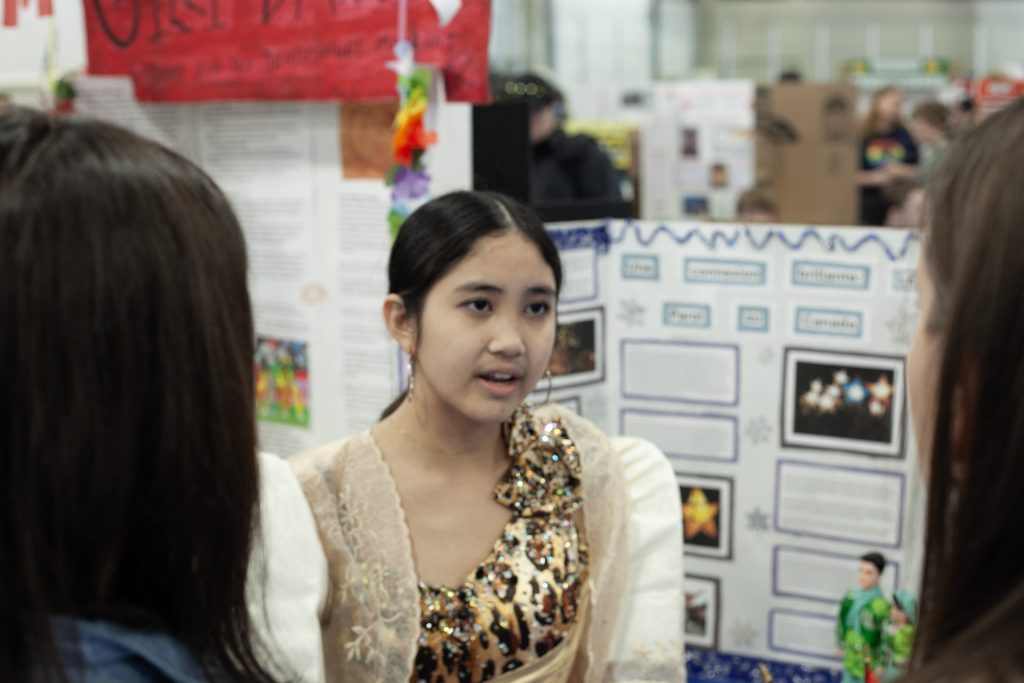
Laxamana based her initial research on information from family members and input from Roland Moreno at the Filipino-Canadian CommUNITY of New Brunswick (FCNB) Inc. More advanced research took her to the CBC and the National Library of the Philippines.
“It’s a traditional lantern that originated during the Spanish colonization between 1565 and 1898,” she said. “It’s made out of bamboo, Japanese paper, and LED lights and varies from region to region and with personal styles. I did this one with my dad and he added this little garland around it.”
Laxamana was adamant about using verified sources and expert information.
“I looked at a lot of resources that were credible, like trusted researchers, especially if those people were interviewed on CTV or CBC.”
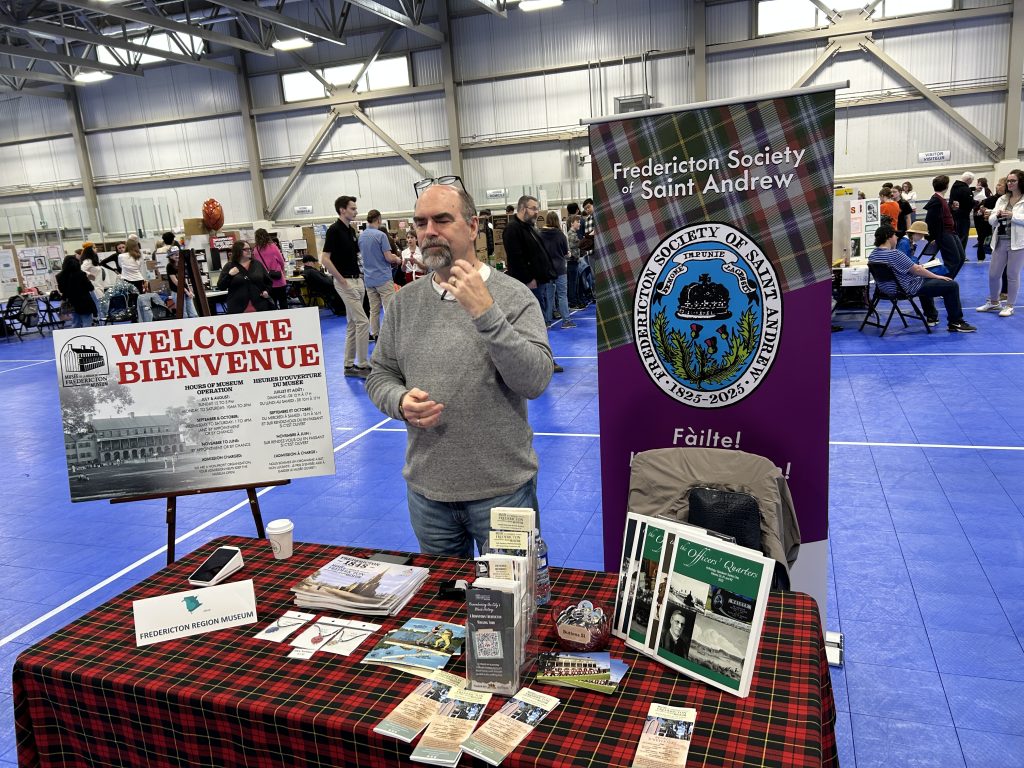
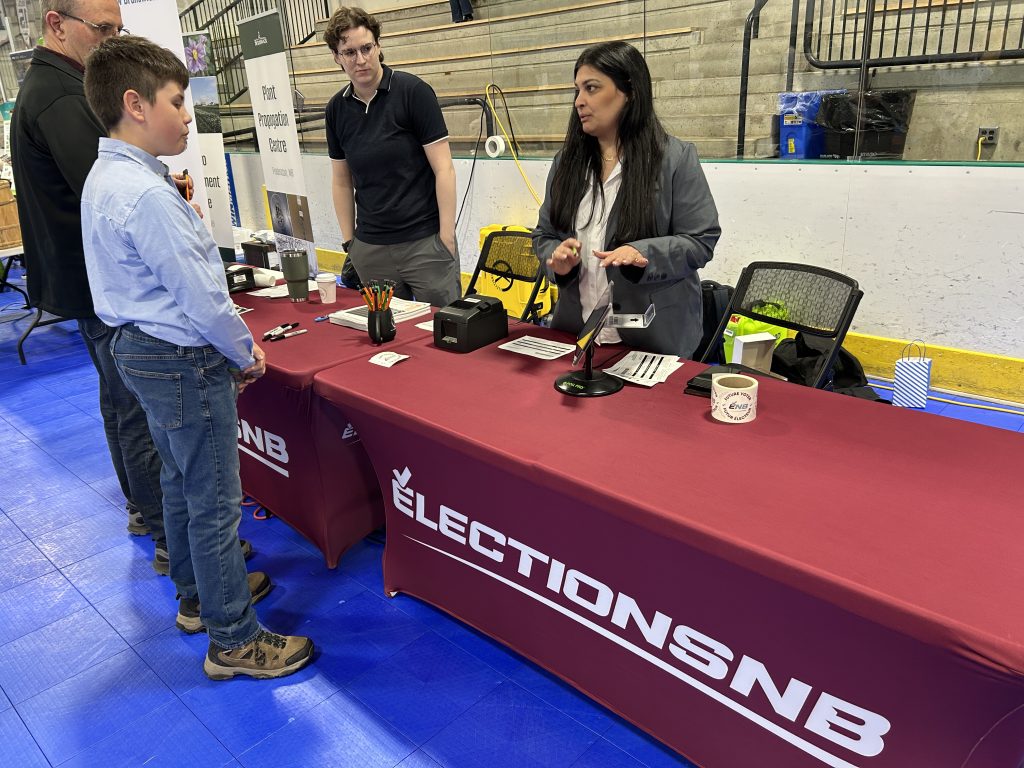
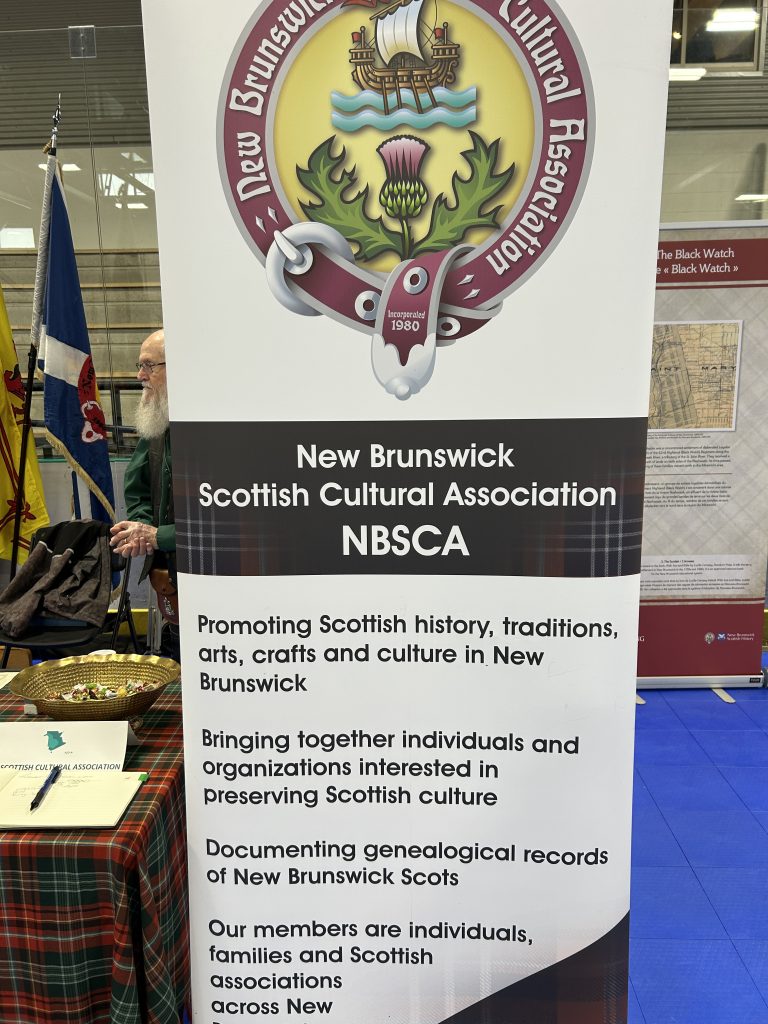
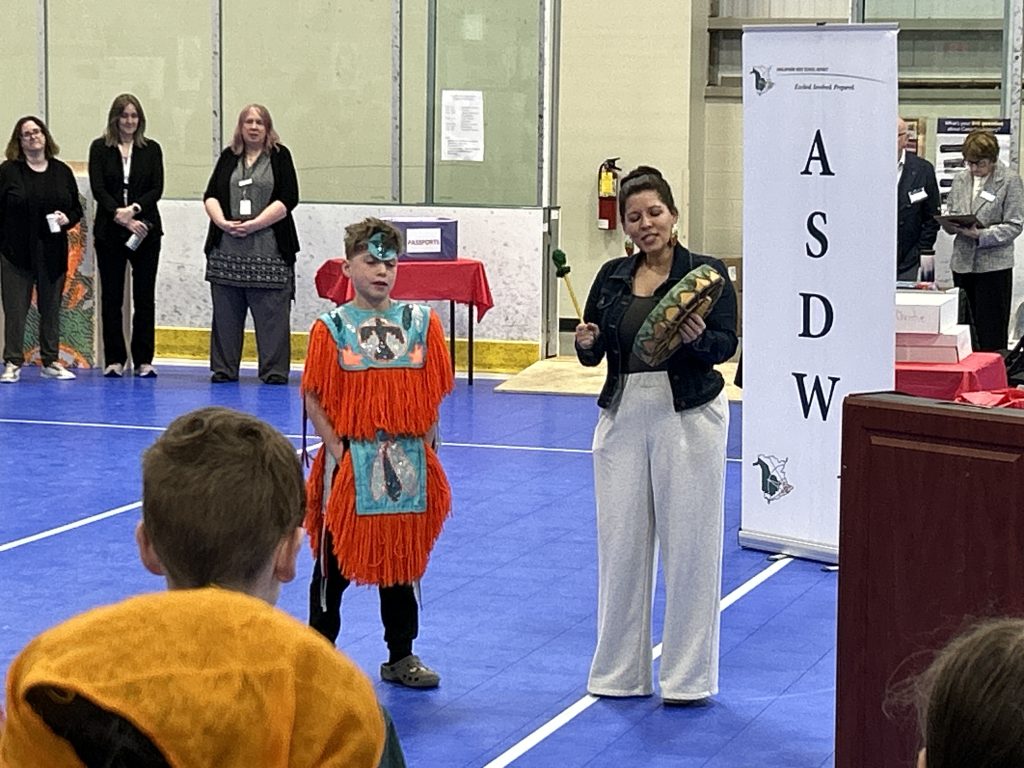
Beth Christie, the district Subject Coordinator for Social Studies, Fine Arts, and Enrichment, couldn’t be prouder of her young sleuths.
“What I love about heritage fair is it empowers students to learn how to research and communicate their findings,” Christie said. “In this world which feels overfull of information, giving students the skills to ask critical questions, find reputable sources, make their own meaning, and present their findings with confidence are key skills to healthy democratic participation.”
Teacher Alexandre Matte, who organized the school-level heritage fair at Nashwaaksis Middle School in April, likes the training students get in researching Canadian history and their connection to it.
“It’s important to know the history of Canada and to practice how to revisit that history,” Matte said. “It’s good for them to get in touch with their roots and, through all that, they can learn things from our past—and have some fun, of course.”
An abiding curiosity
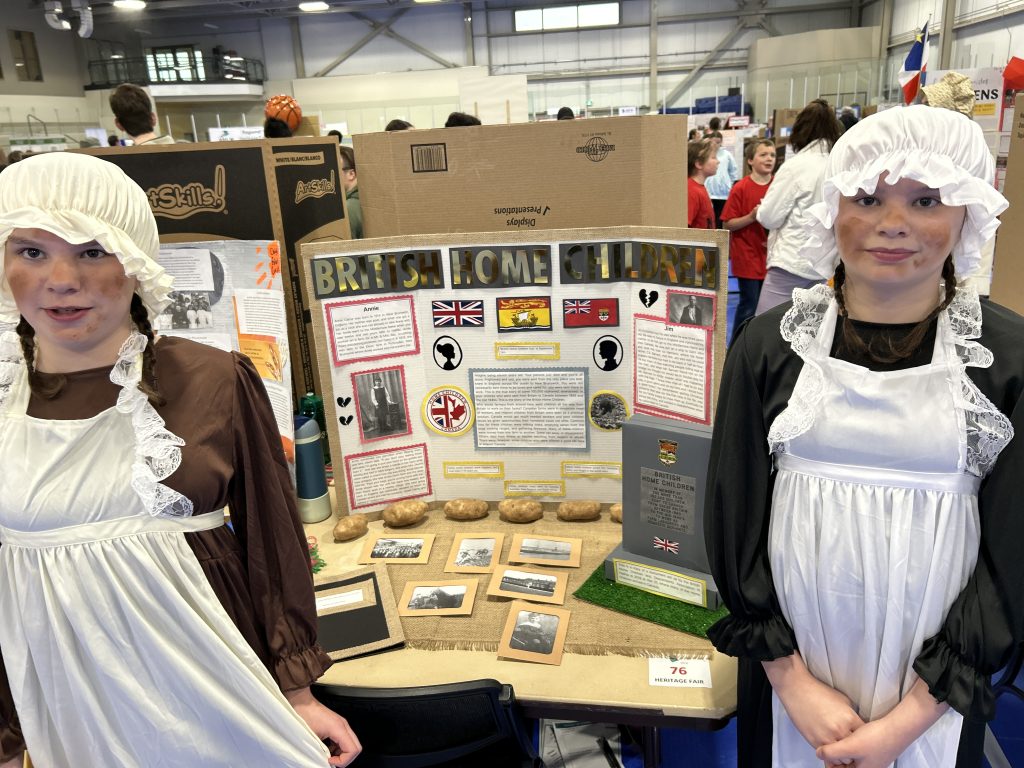
“We chose this subject because we were curious and we couldn’t imagine if we were sent away from our home and separated from our family,” said Townsview School student Sofia Jones about her team project with sister Samara on the British Home Children.
According to Veterans Affairs Canada, the British Home Children were boys and girls born in Britain who, between 1869 and 1948, were relocated to other Commonwealth countries, for what was believed to be their own benefit. Many came from disadvantaged family situations in Britain and were sent to places like Canada, Australia, New Zealand, and South Africa in hopes they would have better lives in those countries. Unfortunately, many were treated quite poorly.
“We couldn’t imagine if we were sent away from our home and separated from our family.”
Sofia Jones, Grade 6, Townsview School
“Canada thought it would be good because the poor children would be given opportunities here that their home country could not offer them,” said Sofia, who, along with her sister, dressed in the 19th-Century garb of a female British Home child.
“They actually worked on farms. They picked potatoes and, most commonly, milked cows,” added Samara.
The sisters started their research in the time-tested, traditional way by reading books from Hartland’s Dr. Walter Chestnut Public Library. And when it was time to search for information online, they received sage parental advice.
“Our parents helped us look for information that wasn’t AI-generated or from Wikipedia, which can have false sources,” Sofia said. “We didn’t use any of that.”
A plan for rewarding research
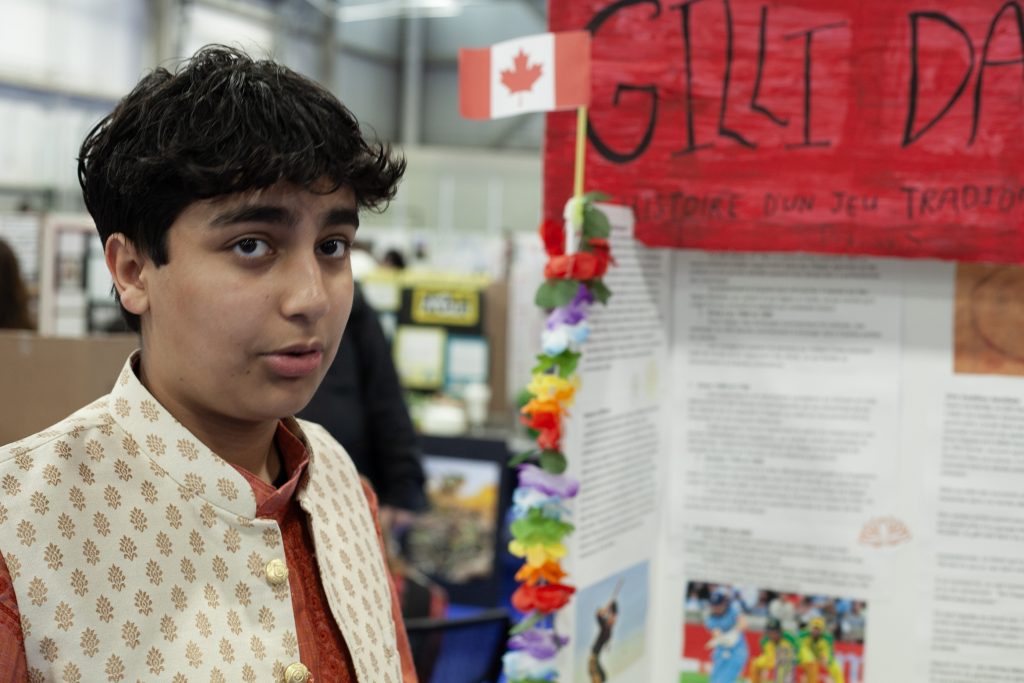
Grade 9 FHS student Pranav Shukla learned a valuable lesson from his teacher for life as well as for research, when preparing his project on the Indian game of gilli danda, the precursor to cricket: If at all possible, have a plan.
“She helped me a lot in what direction I should go in my research,” Shukla said. “My research should aim to answer specific questions, and I should determine those questions right from the start.”
Shukla’s project combines his family history with the evolution of cricket. His primary sources were relatives familiar with the sport, which has been played in India for more than two millennia, according to the Gilli Danda International Federation.
“It’s a traditional Indian game, but when the British came, they were influenced by the sport and turned it into cricket. And now cricket is one of the largest sports in the world,” he said. Gilli danda has also been compared to baseball.
Shukla used The Encyclopedia Britannica, various gilli danda rule books, and accounts from his family. His grandfather travelled the world for work and visited Canada frequently.
“There were multiple articles talking about the same thing and everything that my grandfather, my parents, and their friends said all matched up with the articles,” he said.
Shukla cites the importance of remembering the origins of other sports as well, like hockey: “If we don’t remember their origins and if we don’t pay respect where it’s due, we’re really forgetting our heritage, our roots, our culture.”
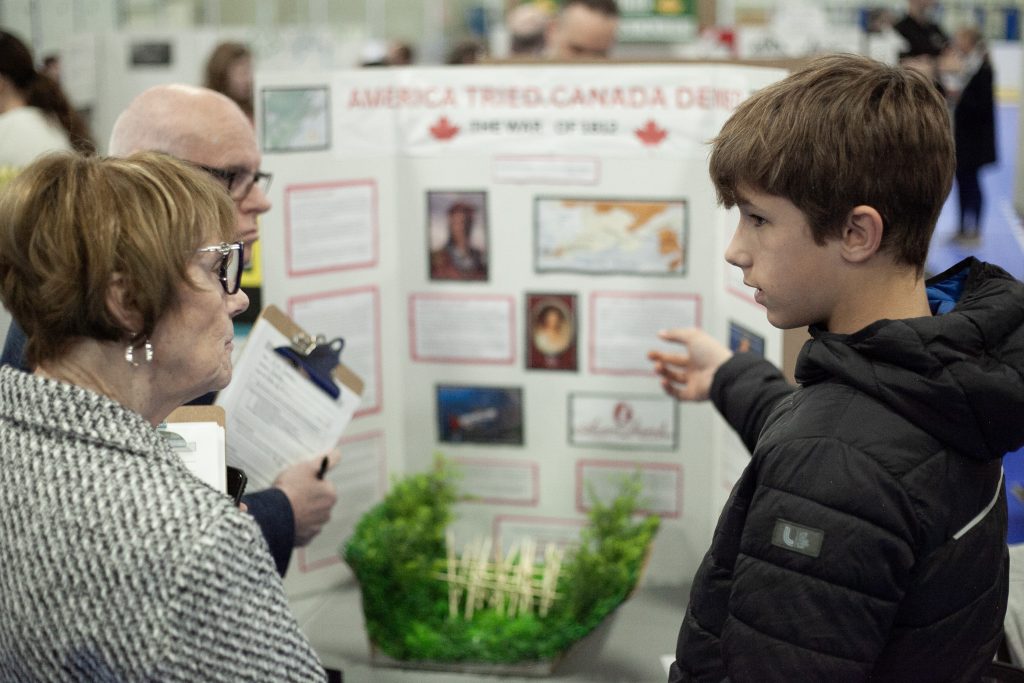
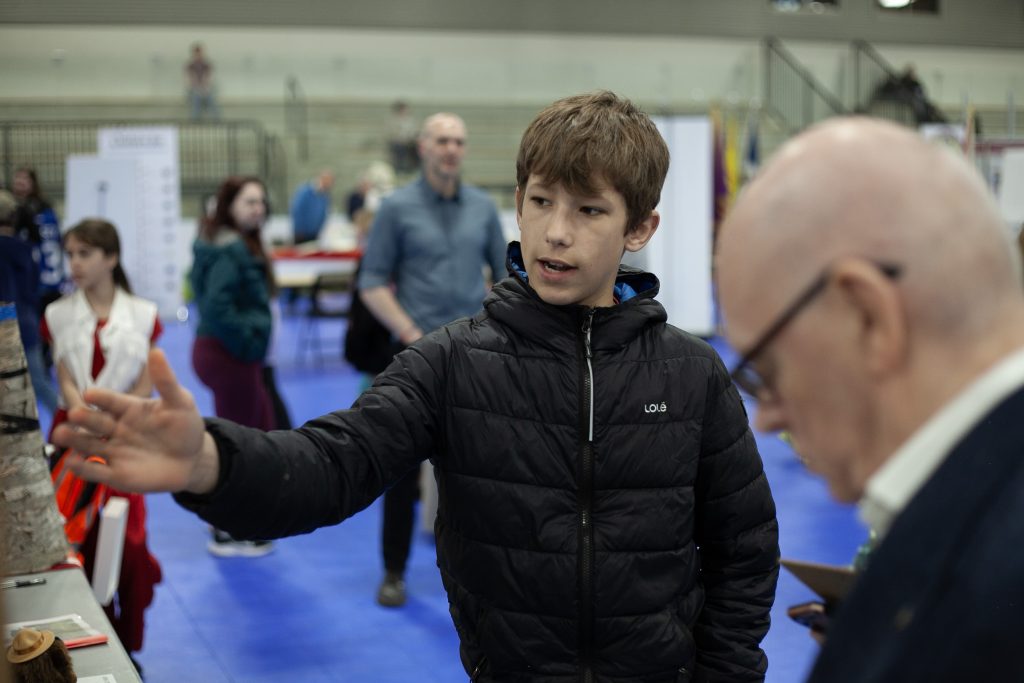
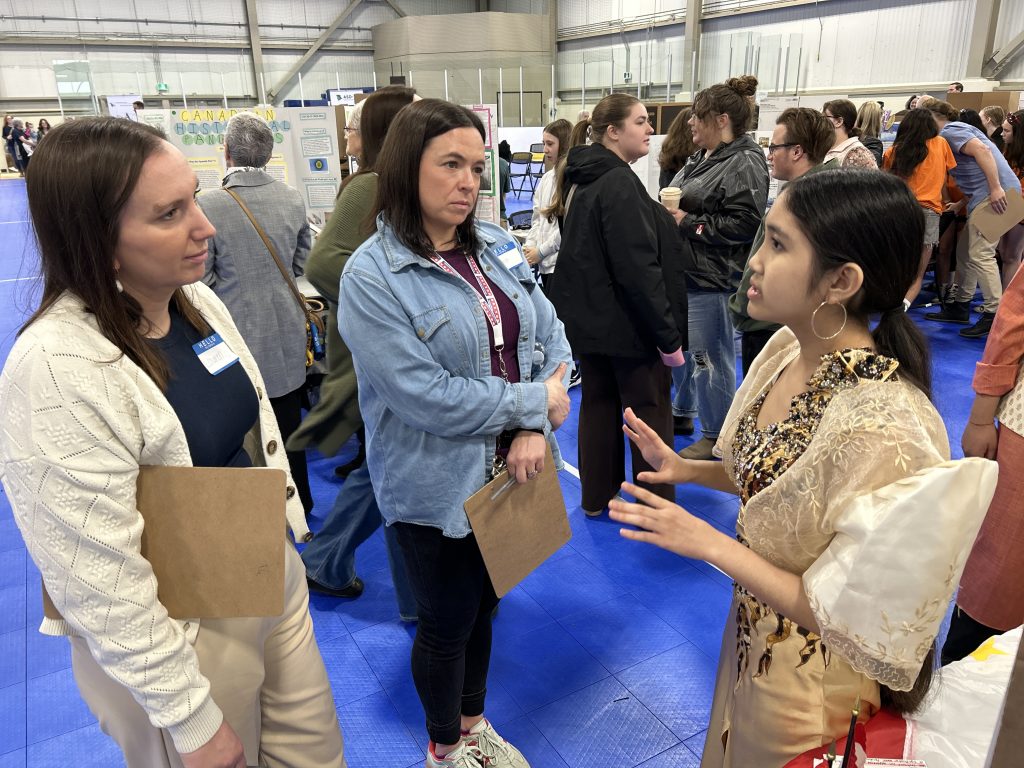
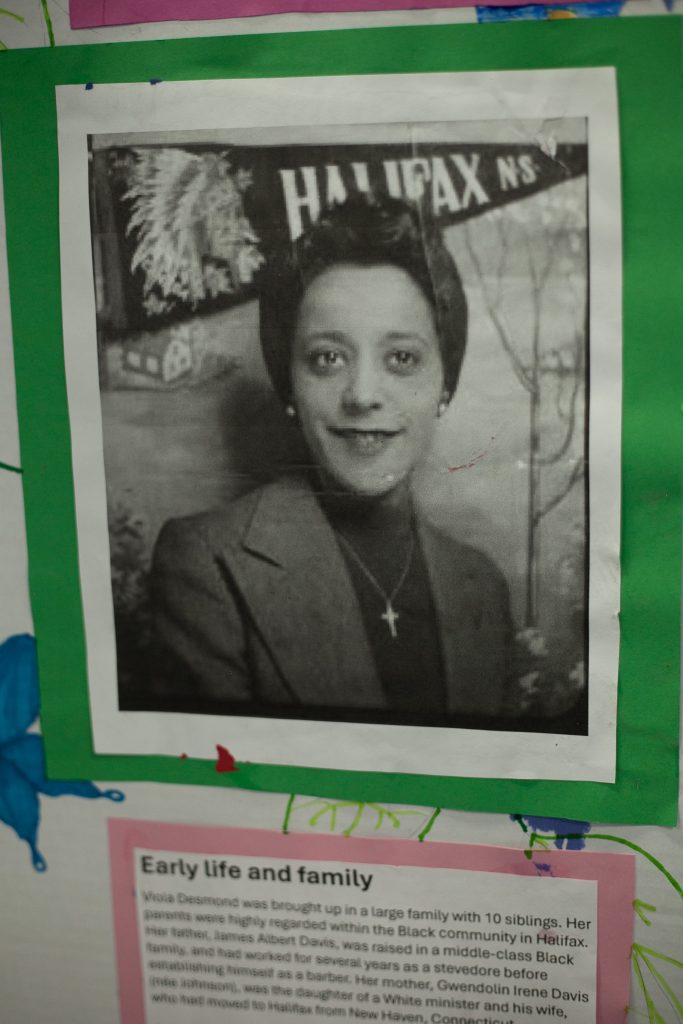
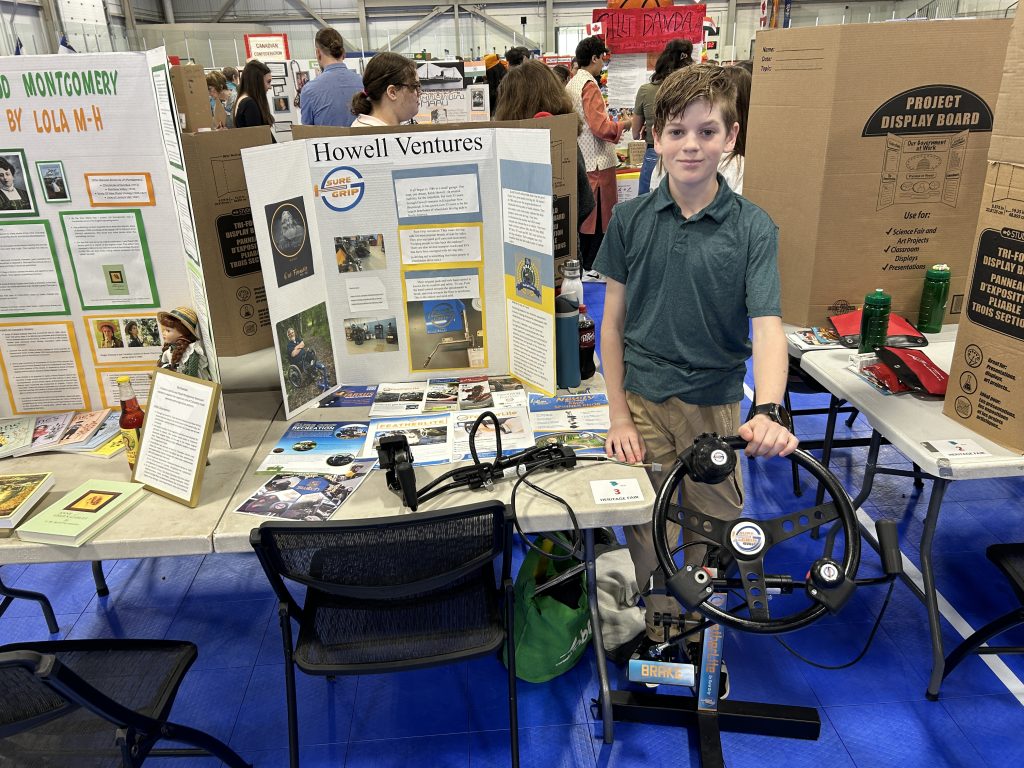
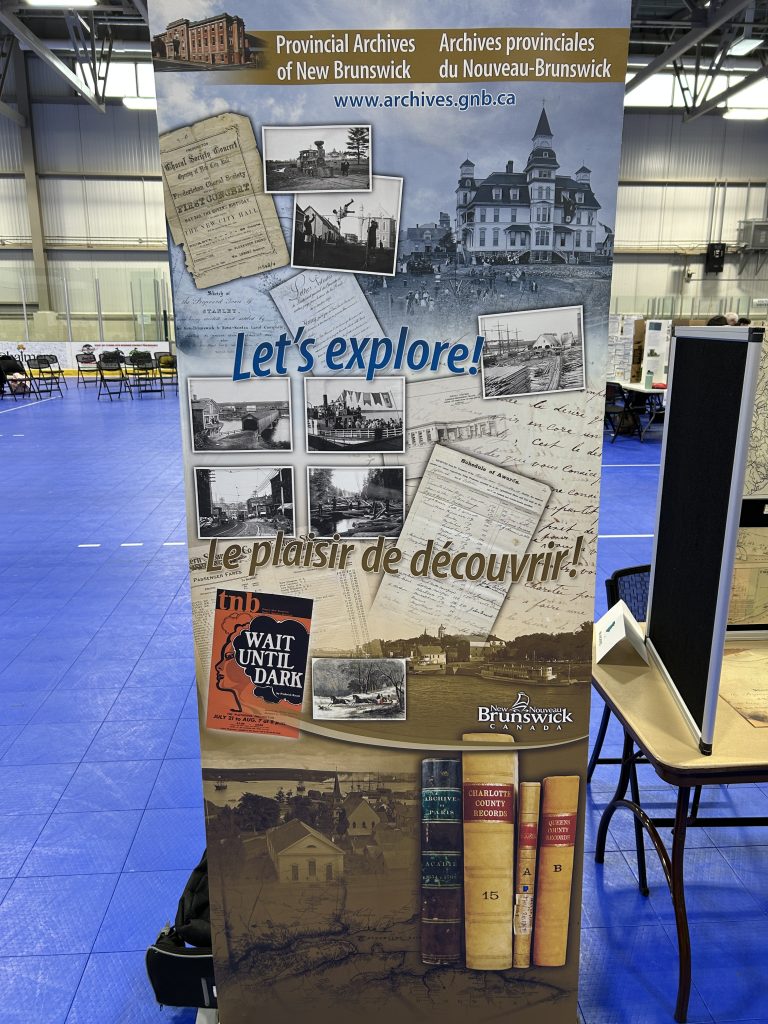
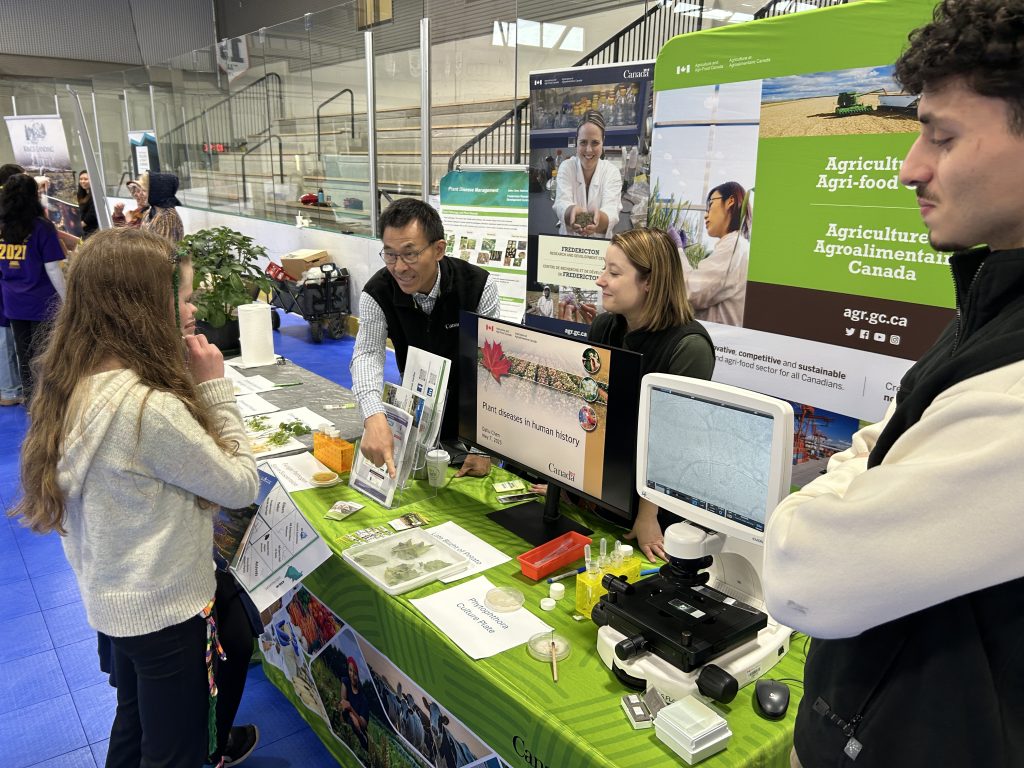
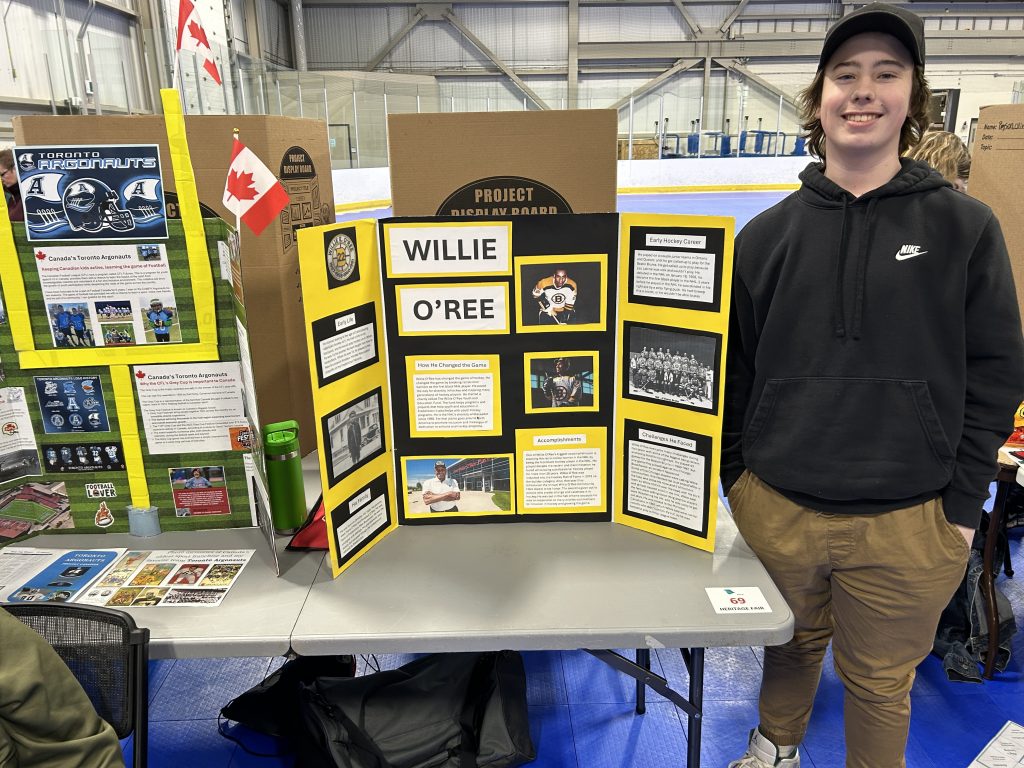
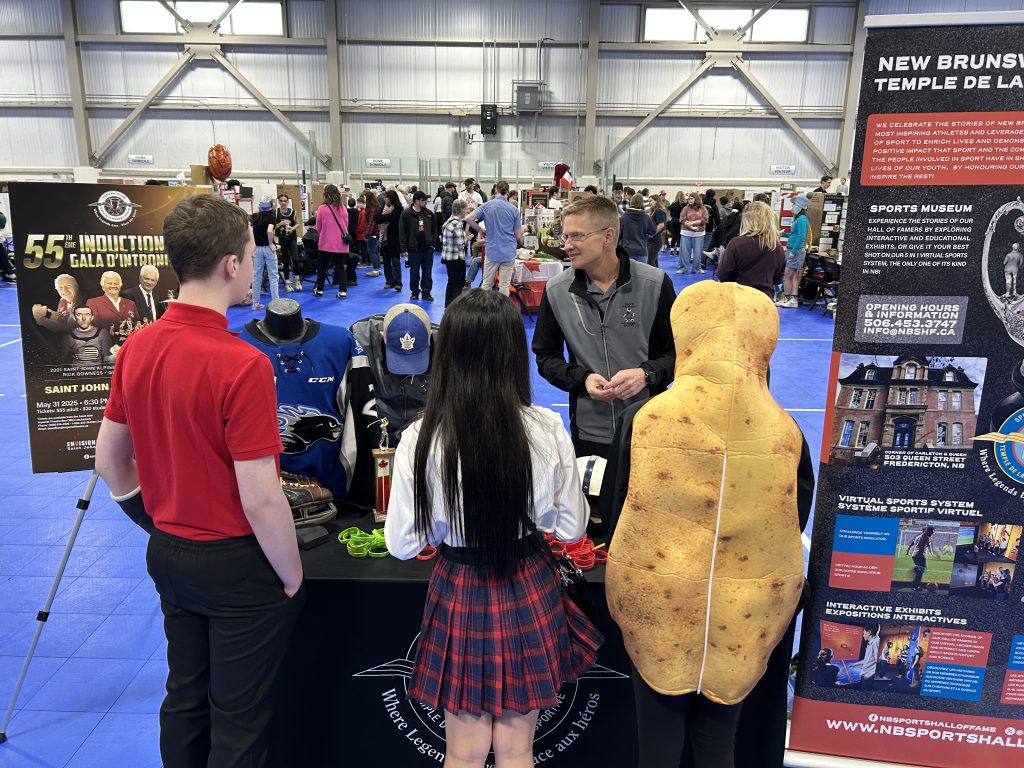
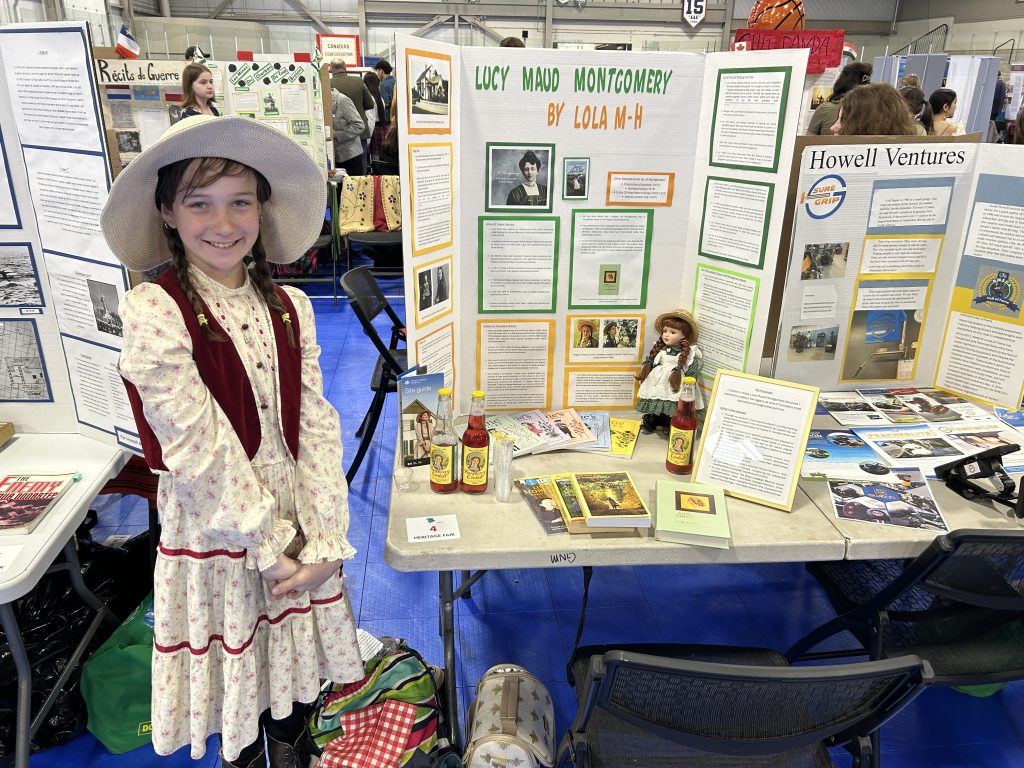
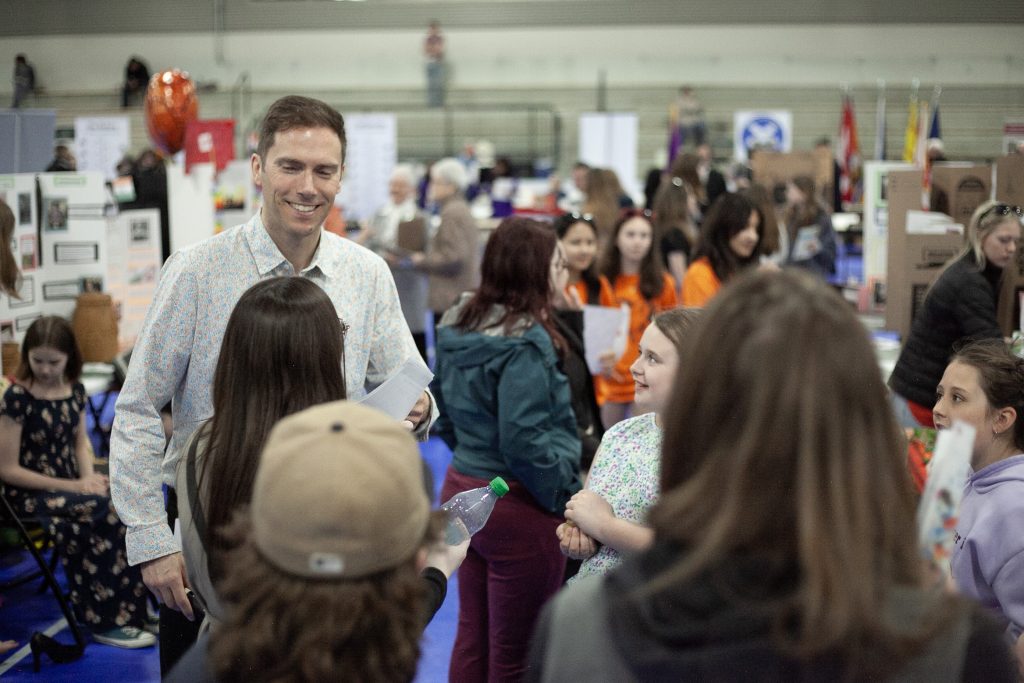
Images from select school heritage fairs
Hubbard Elementary School, April 8
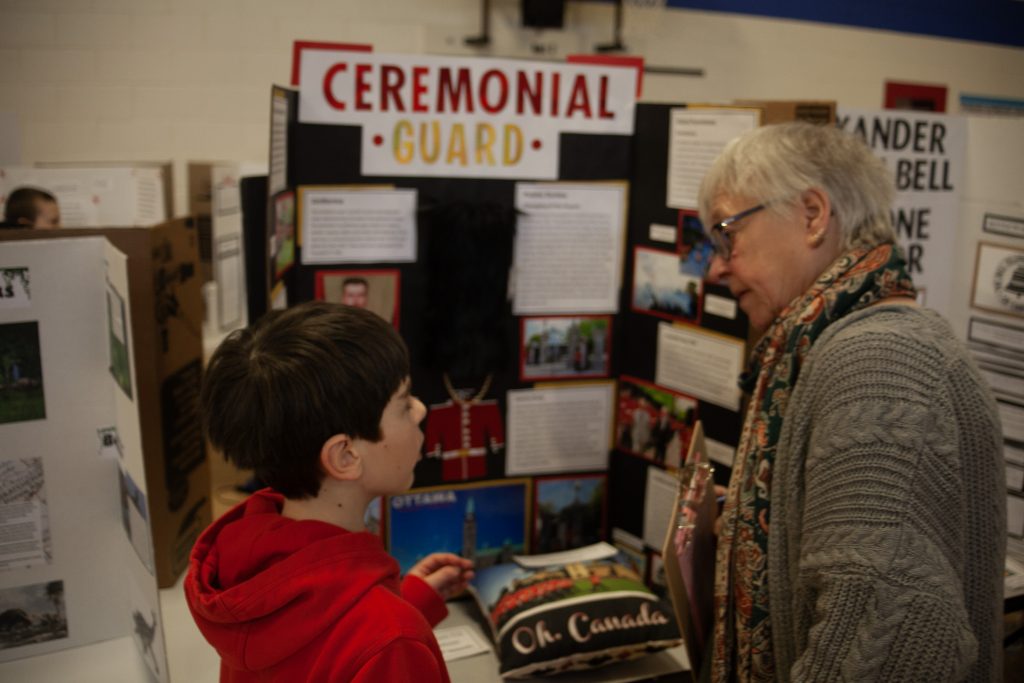
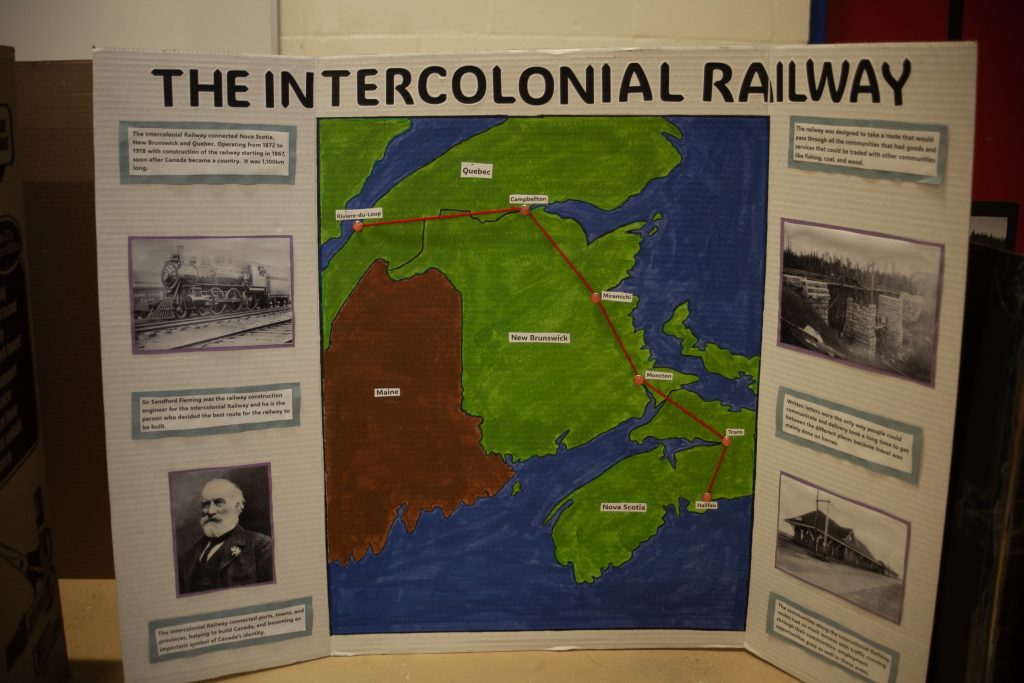
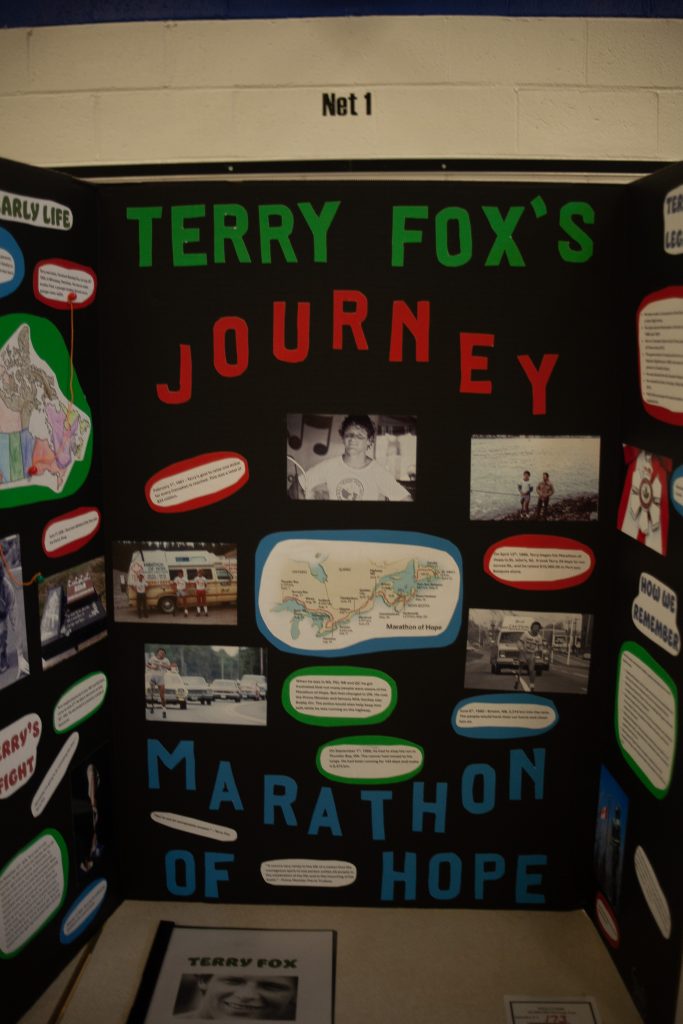
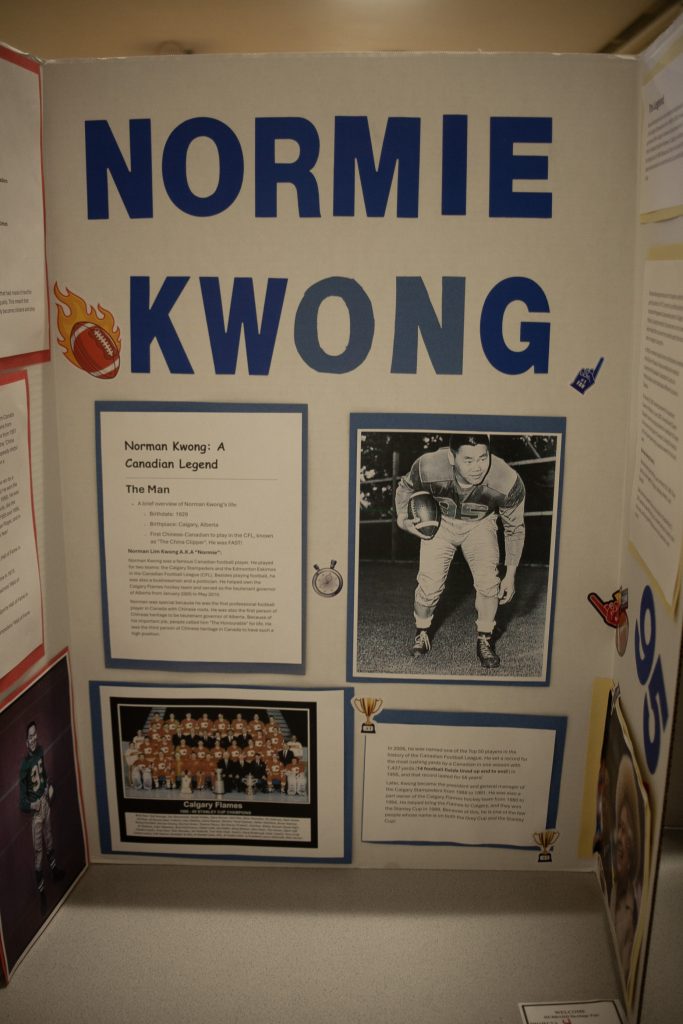
Nashwaaksis Middle School, April 10
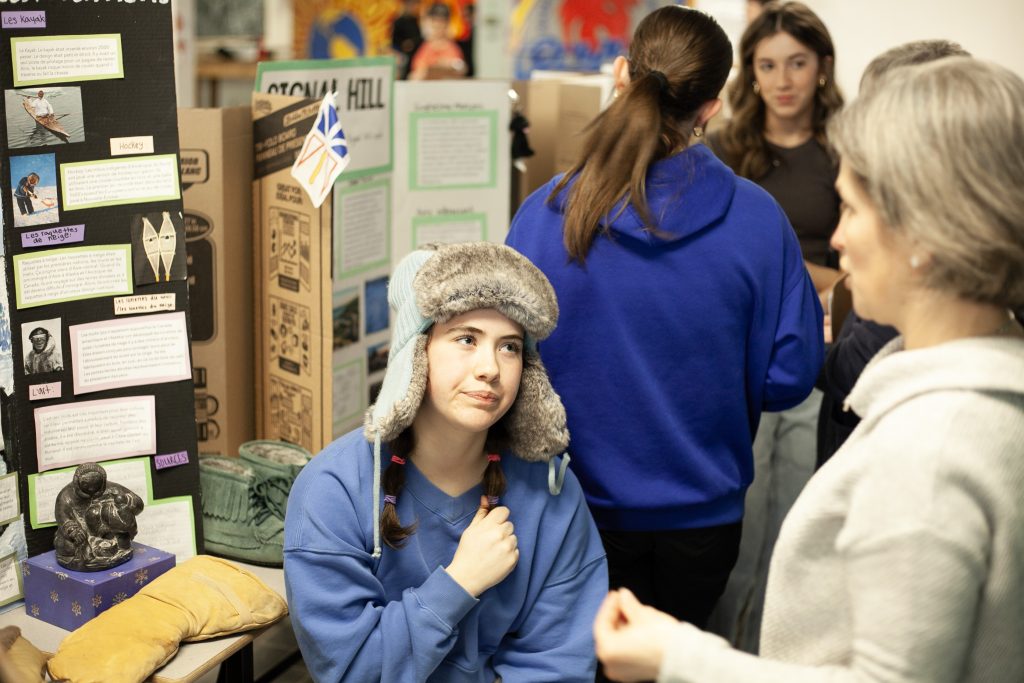
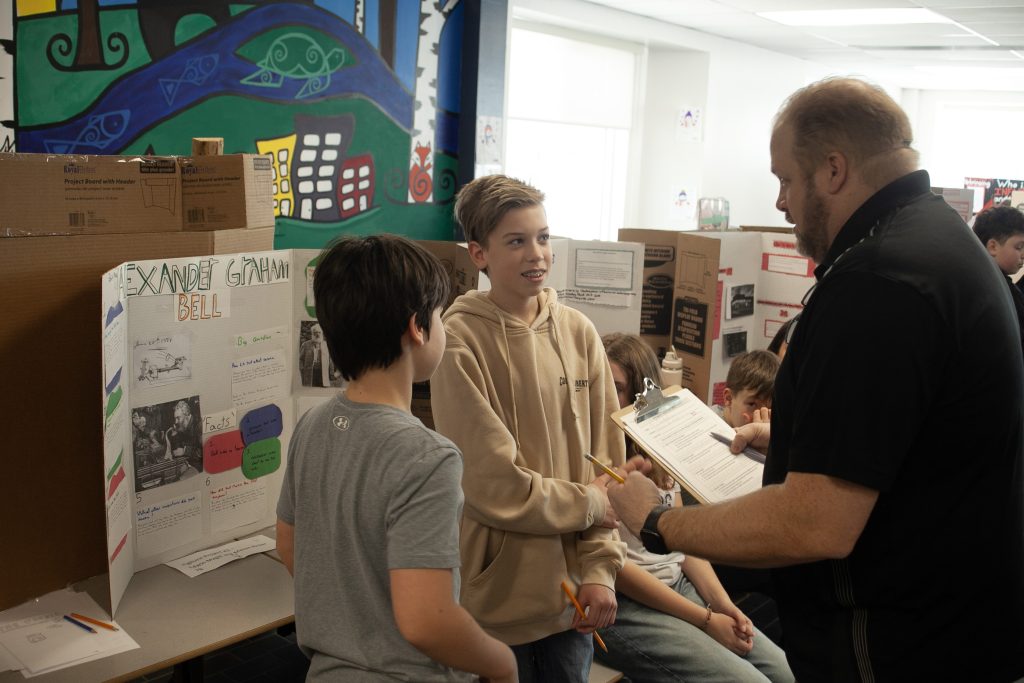
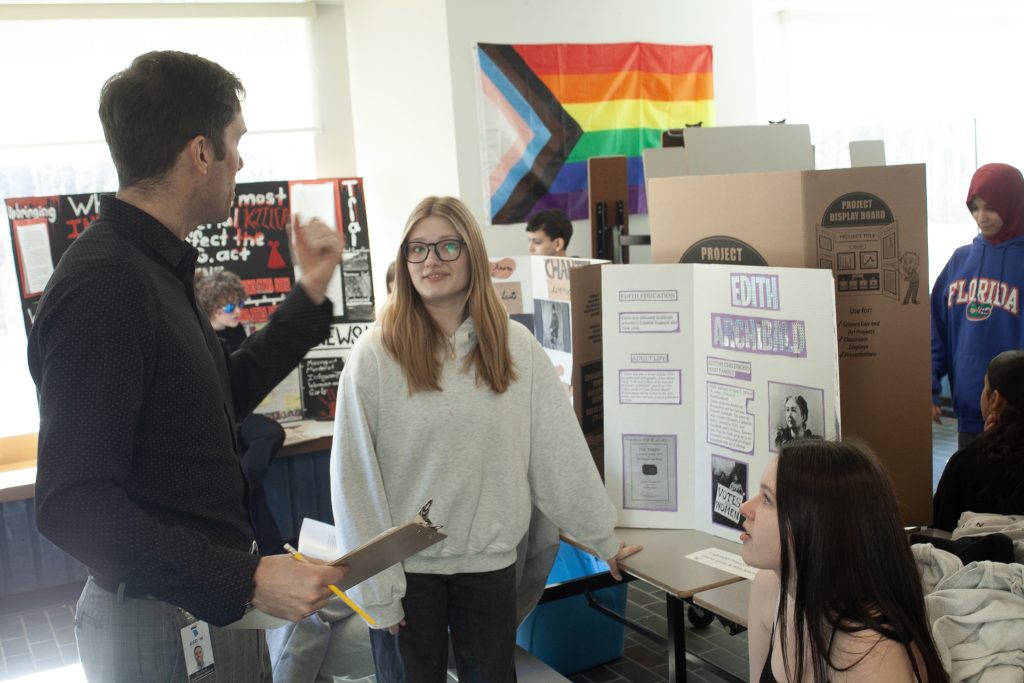
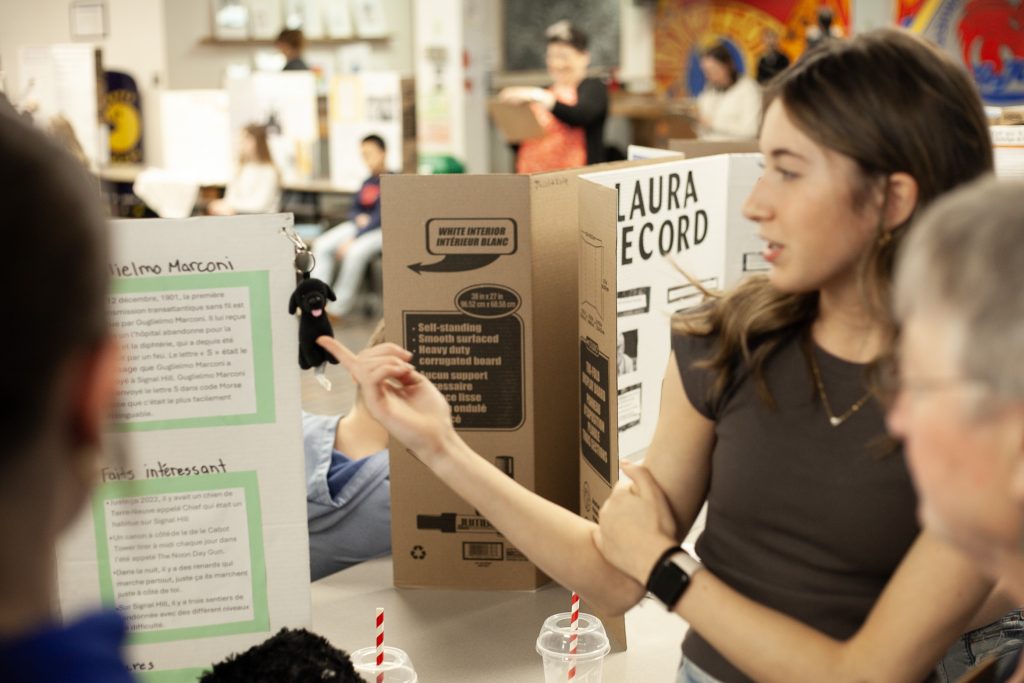
Garden Creek School
